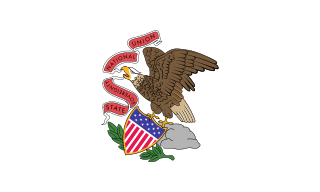| 11th Regiment Illinois Volunteer Infantry | |
|---|---|
Illinois flag | |
| Active | April 30, 1861, to July 30, 1861; July 30, 1861, to July 14, 1865 |
| Country | United States |
| Allegiance | Union |
| Branch | Infantry |
| Engagements | Battle of Fort Donelson Battle of Shiloh Battle of Port Gibson Battle of Champion's Hill Siege of Vicksburg Battle of Jonesborough |
The 11th Regiment Illinois Volunteer Infantry was an infantry regiment that served in the Union Army during the American Civil War. It was originally formed as a three-month volunteer unit at the beginning of the war, and then reorganized as a three-year unit, in which role it served until the end of the war.

Infantry is the branch of an army that engages in military combat on foot, distinguished from cavalry, artillery, and tank forces. Also known as foot soldiers, infantry traditionally relies on moving by foot between combats as well, but may also use mounts, military vehicles, or other transport. Infantry make up a large portion of all armed forces in most nations, and typically bear the largest brunt in warfare, as measured by casualties, deprivation, or physical and psychological stress.

A regiment is a military unit. Their role and size varies markedly, depending on the country and the arm of service.

During the American Civil War, the Union Army referred to the United States Army, the land force that fought to preserve the Union of the collective states. Also known as the Federal Army, it proved essential to the preservation of the United States of America as a working, viable republic.







